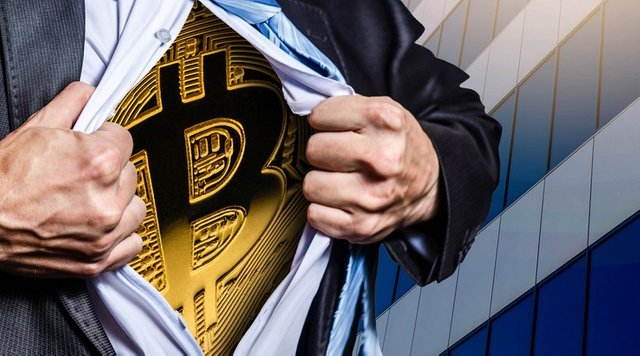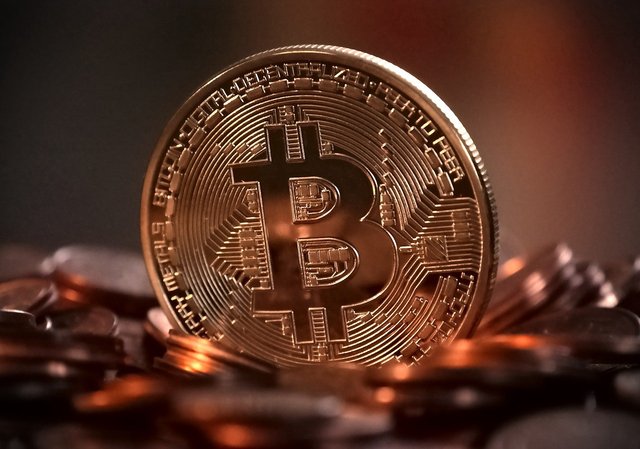The Ultimate Guide to Bitcoin Forks - Part I
by Crystal Stranger, Founder of PeaCounts

Image By Steeemkr
Bitcoin Forks
Bitcoin forks are a common practice in the cryptocurrency world. Forks are, simply put, changes in the rules of the coin’s blockchain or disagreements between nodes on a previous transaction(s). There are two options for these forks; hard or sort. Hard forks have become a new cryptocurrency, and soft forks are software updates that do not create a new chain. A few hard forks have made major headlines and become legitimate cryptocurrencies of their own. Many more were quietly spun-off as hard forks, not gaining much media attention or traction.
There were no good resources to understand Bitcoin Forks, so we developed a guide. Here, we’ll condense the main Bitcoin forks, investigate the intentions behind these projects, and cover why each coin might be worthwhile. Considering the sheer volume of forks (there have been over 44 forks since Bitcoin Cash came out less than a year ago), this analysis will be broken into a two-article series to make the material a bit more digestible.
Bitcoin Cash

The most well-known of Bitcoin forks is Bitcoin Cash. In early 2017, the Bitcoin community split over if Bitcoin should focus on payment transactions or maintain its position as the strongest store of value. Many were also unhappy with the SegWit changes implemented in a soft fork. SegWit, short for Segregated Witness, breaks each Bitcoin transaction into two sets of codes. Under SegWit, the unlocking signature is sent as a second file at the end of the chain.
A faction thought this would reduce security in Bitcoin while only moderately improving transaction speeds. In response, this developer cotillion created Bitcoin Cash to generate larger block sizes based on the pre-SegWit Bitcoin chain instead.
Bitcoin Cash has gone on to fork two times on its own since then. Bitcoin Classic forked using the pre-SegWit code that was developed in an attempt to create a coin based on Satoshi Nakamoto’s original vision, and Bitcoin Candy added resistance to quantum computing attacks on top of the Bitcoin Cash model.
Bitcoin Gold
Mining is the process of earning new coins by providing the computer resources that verify transactions on the blockchain. To create a genuinely decentralized mining system, Bitcoin Gold was developed using Equihash so that it would not run on the ASIC- based mining systems that large consortiums use. This development allowed small miners to process more of the blocks using the more standard GPU mining set-ups. Besides making a more fair system for small miners, this also protects against stronger computer groups attacking the system. Additionally, Bitcoin Gold uses what they call Replay Protection to secure wallets and transactions against malicious attacks. Bitcoin Gold should not be confused with the scam fork of Bitcoin Platinum that was developed by a South Korean teenager as a joke.
Bitcoin Diamond

A post-SegWit fork, Bitcoin Diamond incorporated the Lightning Network to increase transaction speeds. At one point, the market cap for the fork was over 1 million USD. The current market cap is still in the 300 million dollar range, showing traction for this otherwise unremarkable project. A good name goes a long way.
Bitcore
Bitcore created the world's first hybrid fork where they did not do a hard fork off Bitcoin and copy all the existing blocks but instead created a new coin with an empty blockchain. The creators went on to fill all addresses that held at least 0.01 BTC with granting them a new address at a rate of 0.5 BTX for each BTC held.
United Bitcoin
United Bitcoin is a very utilitarian project centered around developing smart contracts on the Bitcoin network that allow coding to be done in standard programming languages such as C# and Java. One of the few forks that has a substantial whitepaper and business model, the new project plans to create a stable coin with 300% collateralization. Under this model, three dollars are held on reserve for every dollar-backed coin issued. The math behind this is complicated, and it's not clear where the funds will come from if this catches on. But United Bitcoin has a smart team so it may be anything is possible. Bitcoin Pay says it is related to United Bitcoin as well but appears to be a separate fork and maybe a legitimate project or a scam.
Bitcoin Stake
It is hard to take this project seriously when they put out a whitepaper that contains just two pages of content. It seems their focus is creating a proof-of-stake (POS) system where rather than using mining which requires extensive computing resources and power to verify the chain and receive new tokens, the use staking instead which requires owning a large number of coins. In this system, the new blocks are allocated based on a percentage of ownership. While POS systems are more environmentally friendly, they are not as secure as the proof-of-work (POW) standard that has never been hacked and is why Bitcoin is seen as a secure store of value.
Bitcoin X
Bitcoin X creates smart contract capabilities like many forks, but its unique element is that it switches to using a delegated proof-of-stake (DPOS) model instead of the standard POW. The DPOS model is more secure than POS. However, the delegation aspects of decision-making for the network, which operate similar to western governments, run contrary to Bitcoin's decentralization ethics. Bitcoin X produces an uncomfortable compromise because the nature of its model brings into question whether or not delegates will have the small token holders' best interest in mind.
Super Bitcoin

Photo courtesy of Finder.com
The "Make Bitcoin Great Again" slogans may have some political connotations, but Super Bitcoin doesn't mind. In addition to increasing the block size to match Bitcoin Cash and adding better smart contract architecture, Super Bitcoin implements zero-knowledge proofs, meaning it includes a system where one party can prove certain information without revealing that information, increasing anonymity.
Oil Bitcoin
This project aims to return lost blocks of Bitcoin to the block rewards by using a proof-of-stake consensus protocol. As there is not much information available online except for a GitHub folder, Oil Bitcoin is a bit of a mystery and may be a scam.
Bitcoin Hot
Bitcoin Hot was another fork in December of 2017 that tried to include all the features of the other forks in one little package. This method sounds cohesive but isn't exactly tidy. Their website is full of spelling errors and looks like a scam. Bitcoin Hot included SegWit and made the block size double that of BCH, increasing transaction speed. However, the full chain is already around 158 GB, making it a large chain to verify transactions if mining.
Bitcoin World

One of the world's most substantial Bitcoin trading hedge funds in China, Richfund, teamed up with a foundation of developers to implement the hard fork that created Bitcoin World in December of 2017 with many of the features of other Bitcoin hard forks. This was a bit ironic, as this hedge fund specializes in arbitrage. Those who want it to do arbitrage ended up sitting on it because exchanges don't allow deposit or withdrawal.
BitClassic
It is incredible comparing the difference between projects launched at the end of 2017 to the ones started in early 2018, and the lack of attention the latter received. BitClassic appears to be a coin that suffered from being released at the wrong time, and into a crowded space. Providing many of the benefits of other forks, BitClassic allows for both POW and POS mining at the same time. A relatively active mining community have released their own direct exchange with four of the major cryptocurrencies.
Lightning Bitcoin

Image courtesy of Crush The Street
One of the slicker Bitcoin fork projects with a fancy website and an accomplished team, Lightning Bitcoin is trying to blend the benefits of Bitcoin and EOS in a single shiny package. Using a DPOS mining model, it should be relatively secure though not as decentralized as systems running POW. They'll have trouble distinguishing themselves in this crowded fork market, but with a good team, anything is possible.
500,000 Blocks
Two hard forks spun off at the 500,000 blocks of Bitcoin, deemed by these companies to be the height of the Bitcoin chain. Bitcoin Faith is another project incorporating the lightning network, zero-knowledge proofs, and a unique type of smart contracts. Bitcoin Eco was also spun off at that point, apparently as a POS system that never saw the light of day.
In the next segment, we'll dig deeper into what investors need to know about Bitcoin Forks projects. We'll also discuss several newer Bitcoin hard forks. Check back in the coming weeks for more!

About Writer Crystal Stranger
Crystal Stranger, EA and author of The Small Business Tax Guide, has more than 14 years of tax experience with a focus on international tax. She has been writing about cryptocurrency tax and regulatory issues since 2014. Wanting to help her tax clients who struggled with regulatory compliance, she founded PeaCounts, a blockchain accounting software company building a revolutionary new payroll system using the token PEA. This new, transparent payroll will promote fair wages and eliminate the need for black market labor.
@cryptoweek, I'm interested in the same topic as you, let's spin it together. I signed on to you, I hope you'll sign up for me. Always glad to meet new people!